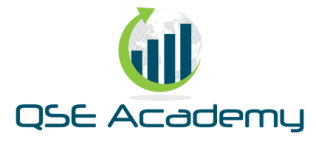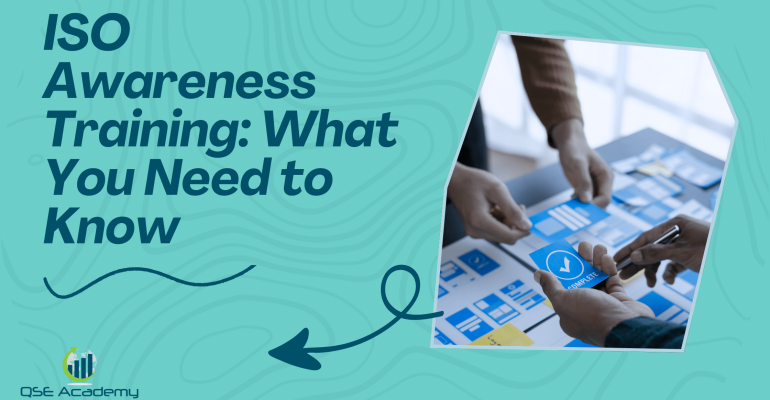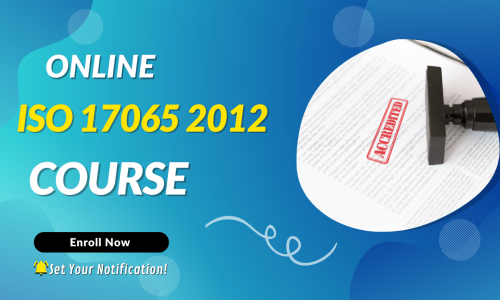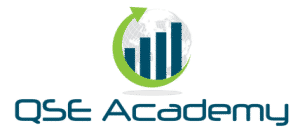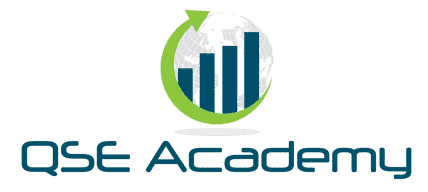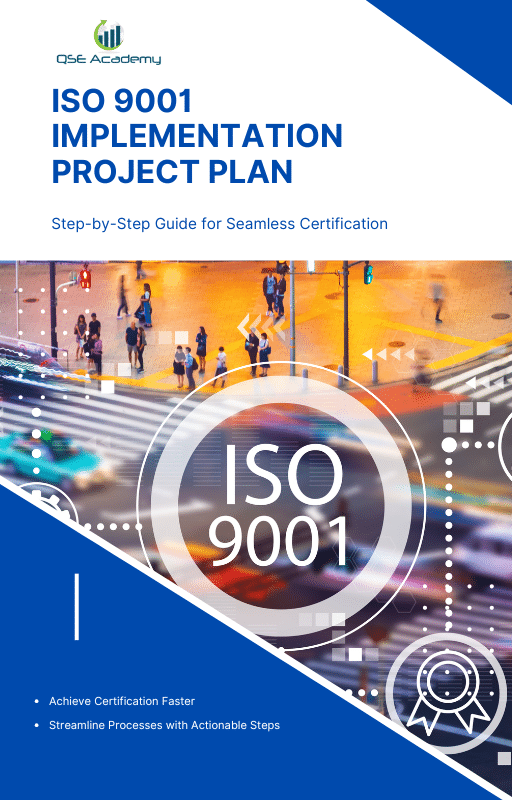ISO Awareness Training: What You Need to Know
Last Updated on October 13, 2025 by Hafsa J.
ISO Awareness Training: What You Need to Know
ISO awareness training is a structured process used to make sure that everyone in your organization understands what ISO standards are, why they matter, and how their individual role fits into the bigger picture. It is not about teaching complex clauses or audit skills—it’s about creating shared understanding, responsibility, and alignment across the team.
Whether you’re preparing for ISO 9001, ISO 14001, or another management system, ISO awareness training is a requirement—not a recommendation. ISO 9001:2015 specifically requires organizations to ensure employees are aware of:
-
The quality policy and objectives
-
How their work affects compliance and performance
-
What happens when processes fail or aren’t followed
Without proper ISO awareness training, people might do the right work—but for the wrong reasons, or in inconsistent ways. It becomes difficult to define quality across the organization when staff don’t understand the language, expectations, or impact of their actions.
In this article, we’ll break down exactly what ISO awareness training involves, who needs it, how it should be delivered, and why it plays a central role in helping organizations define quality at every level.
What Is ISO Awareness Training?
At its core, ISO awareness training is designed to make sure that everyone in your organization—regardless of role or department—understands the purpose, structure, and expectations of the ISO management system being implemented. It’s not about technical audits or document control; it’s about building a shared foundation of knowledge.
Core Purpose and Scope
The primary purpose of ISO awareness training is to help employees see how their individual actions contribute to the overall system. This means helping them:
-
Understand the ISO standard relevant to the organization (e.g., ISO 9001 for quality)
-
Recognize their role in achieving compliance and continuous improvement
-
Be aware of the risks and consequences of non-compliance
It’s also important to note that ISO awareness training isn’t limited to full-time staff. It can (and should) be extended to contractors, part-time workers, and even suppliers, if their actions affect your management system.
ISO Requirements Behind the Training
The need for ISO awareness training is clearly outlined in standards like ISO 9001:2015, specifically in Clause 7.3, which states that organizations must ensure people are aware of:
-
The policy and objectives of the management system
-
How their work contributes to compliance
-
The importance of conforming to requirements
-
Implications of not following procedures
This means you can’t rely on informal conversations or assumption. ISO expects documented evidence that ISO awareness training has been delivered and understood.
By establishing awareness early, your organization creates a more consistent and informed workforce—one that can define quality in practical, real-world terms and apply it every day.
Key Elements Covered in ISO Awareness Training
To be effective, ISO awareness training must go beyond surface-level information. It should give employees a clear understanding of how the management system works and how their daily tasks connect to broader organizational goals.
Policy, Objectives, and Role Clarity
One of the first components of ISO awareness training is helping individuals understand the organization’s ISO-related policies and objectives. But more importantly, they need to know how their specific role supports those goals.
For example:
-
A production worker needs to understand how following procedures reduces defects
-
A receptionist should know how document control and accurate records contribute to system integrity
The training defines expectations in plain terms, helping everyone see where they fit—and how their actions matter.
Understanding the Impact of Non-Conformance
Another core part of ISO awareness training is teaching people what happens when processes are ignored or misunderstood. This includes:
-
Delays
-
Rework
-
Customer complaints
-
Regulatory consequences
Employees don’t need to become ISO experts, but they do need to know that small oversights can have serious outcomes. Clear training helps reinforce personal accountability and builds a stronger quality culture.
ISO Language and Terminology
Finally, ISO awareness training introduces basic terminology that often confuses people. Words like nonconformity, corrective action, or documented information may sound technical—but when explained simply, they become tools for clarity, not barriers.
When everyone speaks the same language, it’s easier to define quality, report issues, and take action quickly. That’s exactly what ISO aims for—and what effective awareness training supports.
How ISO Awareness Training Supports Compliance and Culture
When done right, ISO awareness training does more than just meet a requirement—it creates the foundation for a stronger, more aligned organization. It ensures that people understand both the system and their place within it.
Creating a Unified Understanding of Quality
To operate effectively, every team must share the same definition of what “quality” looks like. ISO awareness training helps define quality in practical, relatable terms that apply to real work—not just theory.
For example:
-
A warehouse team may define quality as accurate, on-time shipments
-
A customer service team may focus on clear communication and fast resolution
Through training, everyone understands that quality is not just a concept—it’s an action. And those actions must line up with the organization’s ISO objectives.
Bridging the Gap Between Policy and Daily Practice
ISO policies are only effective when they influence behavior. ISO awareness training helps turn written procedures into actual habits. It closes the gap between what’s documented and what’s done.
When staff know:
-
Why a policy exists
-
How their actions support it
-
What results are expected
—they’re more likely to apply it consistently. This is how training supports both compliance and culture: by helping people define quality through their own roles and responsibilities.
Formats and Methods to Deliver ISO Awareness Training
There’s no single way to deliver effective ISO awareness training. What matters most is that the method fits your workforce, your processes, and your goals. Whether you’re a large manufacturer or a small consulting firm, the training must be clear, practical, and easy to apply.
Classroom, Digital, and On-the-Job Options
Organizations can choose from several delivery formats:
-
Classroom training: Great for interactive discussions and Q&A, especially when launching ISO systems for the first time.
-
E-learning modules: Ideal for reaching remote teams or delivering repeatable content consistently.
-
On-the-job coaching: Useful when applying ISO principles directly to work tasks, making it easier to connect training with real-world duties.
Whichever approach you use, the focus of ISO awareness training should remain the same: help people understand expectations, roles, and how to define quality in their area of work.
Making Concepts Stick with Visuals and Scenarios
Many employees are unfamiliar with ISO terms and structure. That’s why visual aids, real-life examples, and scenario-based discussions make ISO awareness training more engaging and effective.
For instance:
-
A short video showing a nonconforming process and its impact can clarify complex ideas instantly.
-
A role-specific case study helps employees connect ISO requirements to their tasks.
When people can visualize what quality looks like—and what it doesn’t—they’re more likely to apply it. And that’s the real goal of ISO awareness training: building everyday understanding that leads to consistent action.
When and How Often Should ISO Awareness Training Be Conducted?
Timing matters just as much as content. To be effective, ISO awareness training needs to be delivered at the right moments—when it’s most relevant and likely to be retained.
During Onboarding and at Regular Intervals
Every new employee should receive ISO awareness training as part of their onboarding. This ensures that from day one, they understand:
-
The company’s ISO commitments
-
Their role in meeting compliance
-
How their actions help define quality
But training shouldn’t stop there. ISO standards emphasize the need for ongoing awareness, not just a one-time session. Periodic refreshers—once a year or tied to performance reviews—help reinforce key messages and update staff on any changes to policies or objectives.
Post-Audit and System Updates
Another key moment for ISO awareness training is after an internal or external audit. If findings reveal confusion or gaps in understanding, targeted training helps correct course quickly.
Additionally, when processes, documentation, or policies are updated, awareness training ensures everyone is aligned with the new direction. It’s an essential step in making sure changes are understood, accepted, and consistently applied.
In short, ISO awareness training isn’t a checkbox—it’s a recurring tool that keeps your workforce aligned, informed, and capable of contributing to system performance every day.
Measuring the Effectiveness of ISO Awareness Training
Conducting ISO awareness training is only half the job. The other half is knowing whether it worked. Just because someone attended a session doesn’t mean they understood the content—or can apply it in real situations.
Linking Awareness to Real-World Performance
One of the most practical ways to assess the impact of ISO awareness training is to connect it to observable behaviors. Are employees:
-
Following procedures correctly?
-
Identifying risks and reporting nonconformities?
-
Applying ISO concepts in their daily tasks?
When awareness turns into action, the training is doing its job. When confusion persists or errors continue, it’s a sign that something needs to be reinforced or clarified.
Using Audits, Interviews, and Observations
You don’t need formal exams to evaluate training. ISO auditors often verify awareness informally—by asking questions during audits or observing work on the floor. You can do the same internally by:
-
Conducting spot checks or informal interviews
-
Asking team leads to observe how procedures are followed
-
Reviewing corrective actions to see if root causes relate to lack of awareness
Effective ISO awareness training should result in clear, confident answers and consistent actions. If people can explain their role, reference the policy, and define quality in their own words, you know the message has landed.
Common Pitfalls and How to Avoid Them
Even well-intentioned ISO awareness training can fall short if it’s poorly planned or too generic. To get real value, organizations need to avoid a few common mistakes.
Overloading Employees with Technical Detail
One of the biggest issues is trying to cover too much too fast. ISO awareness training is not meant to turn every employee into an auditor. It’s about clarity, not complexity. When the material dives too deep into clauses, terminology, or audit procedures, people disengage.
Keep the content focused on what employees need to know:
-
The core policies and objectives
-
Their individual responsibilities
-
How their actions define quality in daily operations
Training that’s relevant and role-specific always sticks better.
Assuming Awareness Without Verification
Another common mistake is assuming that if training was delivered, awareness exists. But without checking for understanding, ISO awareness training becomes just another task on a checklist.
Avoid this by:
-
Asking simple, open-ended questions during meetings
-
Encouraging staff to explain ISO concepts in their own words
-
Observing how closely procedures are followed over time
Real awareness can be seen in actions. And the purpose of ISO awareness training is to make sure everyone not only hears the message—but lives it.
Why ISO Awareness Training Is Essential for System Integrity
At the heart of any management system is people—not just processes or paperwork. And without proper ISO awareness training, even the best-designed system can fail due to misunderstanding or inconsistency.
Building a Culture of Responsibility
ISO awareness training helps build a culture where quality, safety, and compliance are part of everyday thinking—not just audit-day priorities. When employees understand how their role fits into the system, they’re more likely to take ownership of outcomes and speak up when something’s off.
This is especially important when trying to:
-
Reduce errors and prevent recurrence
-
Improve communication across departments
-
Ensure that everyone can help define quality in their own context
Protecting the System from Gaps and Missteps
Without awareness, it’s easy for procedures to be skipped, misunderstood, or ignored. ISO awareness training acts as a safeguard. It ensures that the people who operate and support the system actually know how it works, why it matters, and what happens when it fails.
In short, consistent, well-structured ISO awareness training is what keeps your management system alive, practical, and effective—not just certified on paper.
Conclusion: ISO Awareness Training Is the Foundation of System Success
ISO systems only work when people understand them—and that’s exactly what ISO awareness training is designed to achieve. It ensures that every person in the organization, from leadership to line staff, knows what the management system requires, how their role supports it, and what actions define quality in their everyday work.
As we’ve explored throughout this article, ISO awareness training is not optional, nor is it something to be rushed or treated as a formality. It is a critical part of maintaining compliance, building a strong culture, and achieving real-world performance.
When done properly, ISO awareness training does more than meet a clause in a standard—it equips your team to act with clarity, accountability, and purpose. And most importantly, it empowers your organization to define quality in a way that is practical, consistent, and meaningful.
Whether it’s ISO 9001, ISO 22000, or the cosmetics-focused ISO 22716, I’ve spent my career I’m not here to call myself an expert—I prefer “enthusiast” because I truly love what I do. When I’m not writing about standards, you’ll probably find me playing Piano 🎹, connecting with people, or diving into my next big project💫. I’m an engineer specialized in the food and agricultural industry
make ISO standards less intimidating and more approachable for everyone.
turning complex jargon into clear, actionable steps that businesses can actually use.
There’s something incredibly rewarding about helping people navigate food safety and quality management systems
in a way that feels simple, practical, and even enjoyable.
I have a Master’s in QHSE management and over 12 years of experience as a Quality Manager
I’ve helped more than 15 companies implement ISO 9001, ISO 22000, ISO 22716, GMP, and other standards
My clients include food producers, cosmetics manufacturers, laboratories, and service companies
I believe quality systems should be simple, useful, and efficient.
